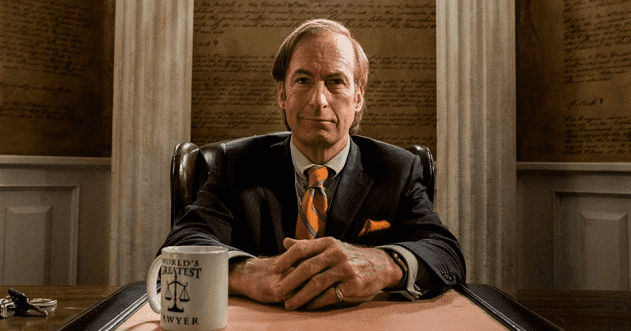Better Call Saul masterfully concluded its six-season journey, earning its place among the best television prequels, perhaps even rivaling its iconic predecessor, Breaking Bad. While Breaking Bad offered a relentless, high-octane thrill ride packed with cliffhangers and plot twists, Better Call Saul distinguished itself as a superb character drama. It wasn’t shy about dialing up the tension to Breaking Bad levels when needed, but it was largely celebrated for its deliberate, thoughtful pace, which allowed for intricate details of the Breaking Bad universe to be beautifully fleshed out.
Even with all the rich background and character development we’ve witnessed over 14 years across Breaking Bad, its sequel film El Camino, and Better Call Saul, there are still some intriguing loose ends that leave us wondering. Here are 10 of those plot points that weren’t fully explained, inviting us fans to speculate and theorize about what truly happened.
A quick couple of notes before we begin. Bob Odenkirk’s character will be referred to as Jimmy or Saul, reflecting the persona he embodied at different times. And, a crucial spoiler warning: if you’re not completely caught up on the Breaking Bad universe, major spoilers are ahead!
10. What Really Happened in Gus Fring’s Past?
Gustavo Fring, memorably brought to life by Giancarlo Esposito, was introduced in Breaking Bad as the ultimate supervillain—first a business partner to Walter White, then his deadly enemy. After Gus decided Walt was disposable, their cat-and-mouse game culminated in Walt’s victory. One of Better Call Saul’s triumphs was humanizing Gus, even getting us to root for him in his bitter war against the Salamanca family. Yet, despite getting to know Gus much better in the prequel, his early life in his native Chile remains a profound mystery.
This enigma surrounding Gus’s past was first hinted at in Breaking Bad when the DEA questioned him. Agent Hank Schrader pointedly asked Gus why no records of his existence could be found before the mid-1980s. Gus brushed it off, citing the chaos of Chile under the Pinochet regime, but Hank remained suspicious. We later learned Gus fought in that conflict alongside Peter Schuler, the German head of Madrigal’s fast-food division, and that they used Madrigal’s resources for global meth distribution. A scene in the Better Call Saul episode “JMM” vividly showed they faced death together, forging an unbreakable bond.
Fans speculate that his upbringing in poverty (which Gus briefly confirmed) and his wartime experiences molded him into the calculating criminal mastermind we knew. But as for the concrete details, we’re as much in the dark as the DEA.
9. What Became of the Kettlemans?
Appearing in shattered_אירועים_אירועים_אירועים_אירועים_אירועים_אירועים_אירועים_אירועים_אירועים_אירועים_אירועים_אירועים_אירועים_אירועים_אירועים_אירועים_אירועים_אירועים_אירועים_אירועים_אירועים_אירועים_אירועים_אירועים_אירועים_אירועים_אירועים_אירועים_אירועים_אירועים_אירועים_אירועים_אירועים_אירועים_אירועים_אירועים_אירועים_אירועים_אירועים_אירועים_אירועים_אירועים_אירועים_אירועים_אירועים_אירועים_אירועים_אירועים_אירועים_אירועים_אירועים_אירועים_אירועים_אירועים_אירועים_אירועים_אירועים_אירועים_אירועים_אירועים_אירועים_אירועים_אירועים_אירועים_אירועים_אירועים_אירועים_אירועים_אירועים_אירועים_אירועים_אירועים_אירועים_אירועים_אירועים_אירועים_אירועים_אירועים_אירועים_אירועים_אירועים_אירועים_אירועים_אירועים_אירועים_אירועים_אירועים_אירועים_אירועים_אירועים_אירועים_אירועים_אירועים_אירועים_אירועים_אירועים_אירועיםer Call Saul, the white-collar criminals Craig and Betsy Kettleman (Jeremy Shamos and Julie Ann Emery) were significant in the show’s first season. Jimmy McGill, the lawyer who would become Saul Goodman, aimed to leave his low-paying public defender work and start his own practice by getting the Kettlemans as clients. Betsy ultimately declined, telling Jimmy he seemed like the kind of lawyer “that guilty people hire.” This cutting remark, and its impact on Jimmy’s psyche, was a catalyst for the emergence of Saul Goodman, America’s most infamous “criminal lawyer.”
Given their crucial role in the birth of the Saul Goodman persona, fans were delighted by their return early in the final season. With Craig having served his sentence for embezzlement, he and Betsy were running a tax preparation service—and swindling seniors. A striking feature of their new business was a giant inflatable Statue of Liberty on the roof, an icon that would later adorn Saul Goodman’s law office.
So, how did Saul end up with that Statue of Liberty? Were the Kettlemans busted again for their shady dealings, forcing a sale of the inflatable? Or did Saul represent them, keeping them out of trouble, and take Lady Liberty as his fee? Something definitely happened, leaving us to guess the specifics.
8. How Did Saul Get His Iconic Cadillac?
Sporting the vanity plate LWYRUP, Saul’s white Cadillac DeVille was one of his most recognizable symbols. Throughout most of Better Call Saul, Jimmy drove a far less glamorous, beat-up Suzuki Esteem. In the pivotal season 5 episode “Bagman,” Jimmy takes the Esteem on a perilous desert journey to retrieve $7 million in cartel money for Lalo Salamanca’s bail. The Esteem, unfortunately, doesn’t survive the ordeal. Interestingly, in that same episode, a blood-stained white Cadillac is seen being cleaned at the Salamanca headquarters.
It’s a reasonable assumption that this particular Cadillac eventually became Saul’s, perhaps as payment for representing the cartel at some point. However, Better Call Saul never explicitly connected these dots. The first time we see the Cadillac with the LWYRUP plates is in a scene set after the events of Breaking Bad, as the FBI seizes the car. The origin story remains untold.
7. What’s the Current State of Skyler and Marie’s Relationship?
Much of the tension in Breaking Bad stemmed from Walt being the brother-in-law of DEA agent Hank Schrader, with Hank often perilously close to discovering Walt was the meth kingpin he was hunting. Their family tie was through their wives, sisters Skyler (Walt’s wife) and Marie (Hank’s wife). The relationship between the sisters was often strained, marked by a persistent sibling rivalry throughout the series.
In the Breaking Bad finale, Walt gives Skyler the GPS coordinates to the burial site of Hank and his partner, Agent Steve Gomez. Walt urged Skyler to use this information to negotiate a deal, potentially absolving her of culpability in his crimes. Towards the end of Better Call Saul, Saul’s assistant, Francesca, mentions that Skyler did, in fact, secure her deal.
This leaves us wondering how Marie processed the news of this deal. In the final episode of Better Call Saul, we see Marie’s displeasure at federal prosecutors even considering a plea deal with Saul. One can only imagine her feelings about her sister potentially trading the location of her deceased husband for her own freedom.
6. Does Kim Wexler Ever Practice Law Again?
Rhea Seehorn delivered a standout performance in Better Call Saul as Kim Wexler, the intelligent and capable lawyer who begins as Jimmy’s friend and evolves into his girlfriend, wife, and eventually, ex-wife. While initially serving as a moral compass against Jimmy’s corner-cutting and law-bending tendencies, Kim gradually becomes entangled in the schemes and misdeeds that shaped the Saul Goodman persona.
This continues until tragedy strikes. After Kim and Jimmy execute an elaborate plot to discredit their colleague Howard Hamlin, Howard tragically ends up in the wrong place at the wrong time and is murdered. Overwhelmed by guilt, Kim relinquishes her law license and ends her relationship with Jimmy.
Given Kim’s profound passion for the law and her exceptional skills as a lawyer, fans naturally hoped she would return to the profession. By the show’s end, the closest she came was volunteering at a legal aid center. Still, it’s hard not to imagine her attempting to rejoin the bar at some future point.
5. Will Howard’s Wife, Cheryl, Pursue Legal Action?
As part of Kim’s attempt to atone for Howard’s death—a path that included surrendering her law license—she also confessed everything to Howard’s wife, Cheryl. This confession detailed the schemes she and Jimmy concocted to tarnish Howard’s reputation and the horrifying truth of how Lalo shot and killed Howard. While confession might be good for the soul, Cheryl astutely pointed out that Kim’s admission opened her up to significant legal liability for her actions.
But will Cheryl actually take legal steps? The last update comes in the final episode, when Saul’s standby counsel, Bill Oakley, tells him that word on the street in Albuquerque is that Cheryl is actively seeking a top-notch lawyer. So, perhaps we’re meant to believe Kim will face a lawsuit. Whether this materializes, or if Kim will face further consequences, is left to our speculation.
4. Does Jesse Pinkman Stay on the Straight and Narrow in Alaska?
The entire Breaking Bad universe often feels like a modern-day neo-Western, and this description is particularly fitting for the sequel film, El Camino. The movie centers on Walt’s former meth-cooking partner, Jesse Pinkman (Aaron Paul), as he evades enemies and law enforcement while trying to gather enough money to pay identity broker Ed Galbraith (Robert Forster) for a new life in Alaska. It’s a classic tale of a lone hero on the run, reminiscent of many Westerns.
Ultimately, Jesse succeeds, and Ed helps him reach Alaska. But the big question is: what’s next for him? It’s entirely plausible that Jesse will make every effort to stay out of trouble and make the most of his fresh start. However, the post-Breaking Bad scenes in Better Call Saul demonstrate how challenging it can be to live under a new identity in a new place without reverting to old habits. Given Jesse’s history of drug abuse, we can only hope he stays on track, but the uncertainty definitely makes us wonder.
3. What Happens to Albuquerque’s Criminal Underworld?
Across two TV series and a movie, we became intimately familiar with the criminal landscape of Albuquerque. When Saul Goodman and his private investigator, Mike Ehrmantraut (Jonathan Banks), were introduced in Breaking Bad, it was clear they were deeply connected. Better Call Saul provided a fascinating backstory, revealing that Mike initially forged many of these connections through Dr. Caldera, the veterinarian. In the final season of Better Call Saul, Dr. Caldera informs Jimmy of his retirement from being an underworld organizer, and his “little black book” teeming with criminal contacts is up for grabs.
This is the very same black book we see Saul consult in Breaking Bad, confirming he acquired it from Dr. Caldera. Later, in Better Call Saul, we learn that the FBI unceremoniously tossed this book into a box when they raided Saul’s house and seized his assets. With Dr. Caldera, Saul, Mike, and most of the other criminal figures we knew gone by the end of the Breaking Bad timeline, a significant power vacuum is left in Albuquerque’s underworld. Who might step up to fill it is anyone’s guess.
2. What Ever Became of Lyle?
Gus Fring’s chain of chicken restaurants, Los Pollos Hermanos, served as the perfect front for his sprawling meth empire. And he had no employee more dedicated than Lyle. Whenever Gus needed to step away from the restaurant to handle more illicit affairs, he always entrusted Lyle with running the store. Unfortunately for Lyle, this also meant Gus occasionally vented his frustrations on his most steadfast employee.
Lyle, ever loyal, never seemed to mind, his commitment to Los Pollos Hermanos and Gus unwavering. So, one can’t help but wonder: after Gus’s demise and the subsequent collapse of the chicken franchise, how did Lyle cope? Did he move on to another fast-food job? Was he ever truly able to recover from the loss of his boss, Gus? These are questions likely to remain unanswered, a small, poignant mystery in the grand scheme.
1. How Did Jimmy Get Chuck’s Copy of ‘The Time Machine’?
The final episode of Better Call Saul prominently featured a time machine motif. In a series of flashbacks, Jimmy/Saul has conversations with three of the most influential people in his life, all touching upon regrets and what they would change if they could travel back in time. His discussions with Mike and Walt directly pose the time machine question. His conversation with his brother, Chuck (Michael McKean), subtly circles the theme until we see Chuck reading a copy of H.G. Wells’s novel, The Time Machine.
Earlier in season 6, we see that Jimmy possesses this exact same copy of the book in the apartment he shared with Kim. This makes us ponder how he obtained it, given that Chuck died in a house fire that consumed all his belongings. So, how did Jimmy manage to retrieve The Time Machine? He clearly kept it as a memento of Chuck, but how did the book survive the devastating fire? Could it be that Jimmy secretly had a time machine all along and went back to save the book? It’s another one of those fascinating, unanswered details that adds to the show’s enigmatic charm.
The worlds of Breaking Bad and Better Call Saul are so meticulously crafted that even these unanswered questions feel like part of their rich tapestry. They fuel discussions, inspire theories, and keep us engaged long after the credits roll. Perhaps some mysteries are best left unsolved, allowing us to continually revisit and reinterpret these incredible stories.
What are your theories on these lingering questions? Which plot points from the Breaking Bad universe do you still ponder? Share your thoughts in the comments below!










